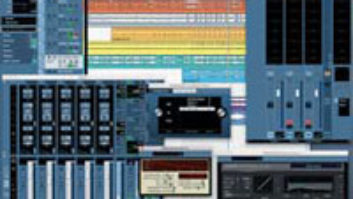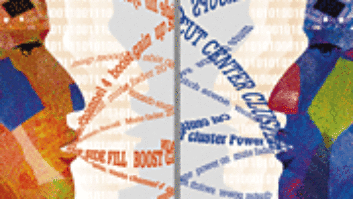Decades ago, multitrack tape recorders had bulky remote/autolocator boxes, trailing multiple umbilical cables in their wake. Remotes were essential: An engineer couldn’t sit next to a giant tape recorder while at the mix position. As tape recorders became smaller, so did the remotes. And with more people piloting their own sessions, remotes became even more crucial. For example, as a guitarist, I needed a hands-free recording solution, so I built a punch-in switch for the TEAC 3340 4-track (fortunately, TASCAM liked the idea enough to include footswitch jacks in subsequent machines). Other remote alternatives appeared, from wireless QWERTY keyboards to music keyboards that doubled as control surfaces. Yamaha in particular focused on integrating its keyboard workstations with Steinberg software.
Now smartphones and tablets have fostered a veritable explosion in remote control options. You’re no longer tied to single-purpose, dedicated hardware, and can control your studio from the palm of your hand, usually wirelessly. A visit to the Apple App Store or Google Play reveals a growing number of apps, like the ultra-customizable, universal TouchOSC control surface by Hexler. It sends and receives OSC (Open Sound Control) and MIDI messages via Wi-Fi or Apple’s CoreMIDI IAC (Inter-Application Communication). Liine’s Lemur is another popular OSC/MIDI controller that’s excellent for DAWs, and it’s deep (for example, you can create a customized interface).

Other general-purpose remotes include DAW Remote, which supports the Logic Control, HUI and Mackie control protocols, and which connects to Mac/Windows computers via Wi-Fi or USB/MIDI cable. A similar app, DAW Control, supports Logic Control and Mackie Control-friendly applications (its interface even looks like a Mackie Control), although it’s optimized for Apple Logic and Ableton Live. And for MIDI only, there’s Sonic Logic’s Knob Lab. It works with USB, Wi-Fi, Bluetooth and IAC, but with a device-to-MIDI adapter, it can also use CoreMIDI to send MIDI signals to hardware devices.
Related: SSL Reveals Remote Tile Live Desk Extender and v4.7 Software, June 13, 2018
Although some of these appear to be Mac exclusives, there’s a PC solution: Tobias Erichsen’s rtpMIDI-driver for Windows 7 and higher, which is compatible with the network MIDI (AppleMIDI, aka RTP-MIDI) included in Apple iOS and macOS. rtpMIDI-driver exposes virtual MIDI ports to applications running under Windows, which allows DAWs to communicate with other computers over Ethernet or Wi-Fi networks. And when you really need something universal for Mac or Windows programs, there’s TeamViewer. It’s designed for secure remote desktop access, but even the free version makes a usable remote control for pretty much anything that runs on a computer.
In addition to general-purpose apps, there are also manufacturer- or product-specific ones, which typically give a better setup and user experience than general-purpose software. For example, Steinberg’s Cubase iC Pro does everything from providing a project overview, to mixing, to allowing the use of custom keyboard shortcuts. It even provides four dedicated cue mixes, so musicians doing overdubs can adjust a mix with an iPhone or iPad. PreSonus’ Universal Control application provides remote control, as well as drivers, for multiple products across its lines of mixers, interfaces, control surfaces and software (i.e., Studio One and Capture). You’ll also find apps for QSC’s TouchMix, Allen & Heath’s SQ, Behringer’s x32 and others.

Related: Software Tech: New Trends in Plug-Ins, by Craig Anderton, March 26, 2019
Apple offers the free Logic Remote app, which connects via Bluetooth and controls almost all program elements; it even edits parameters for third-party plug-ins. And, of course, Avid offers Control for Pro Tools, based around EUCON technology so it’s compatible with other EUCON-aware applications, like Logic Pro X, Steinberg Cubase and Steinberg Nuendo. In addition to parameter control, the app can show an overview of the mix, 40 tracks at a time.
The downside of software remotes involves the usual suspects: the shifting goal posts of software trying to remain compatible with hardware, and days when Wi-Fi or Bluetooth are in a bad mood. While most still need your hands, there’s an answer for that, too. X-Tempo’s pok BLE is a wireless foot controller with eight editable footswitches that can transmit anything from keyboard shortcuts to command strings of six keys per switch—so I’m back to that record punch-in footswitch … but times eight, programmable and wireless.

In any event, the art of remote control has improved dramatically since its early days; now’s an excellent time to do a deep dive into what’s available for controlling your hardware or software, because you have more options than ever.
Want more stories like this? Subscribe to our newsletter and get it delivered right to your inbox.





